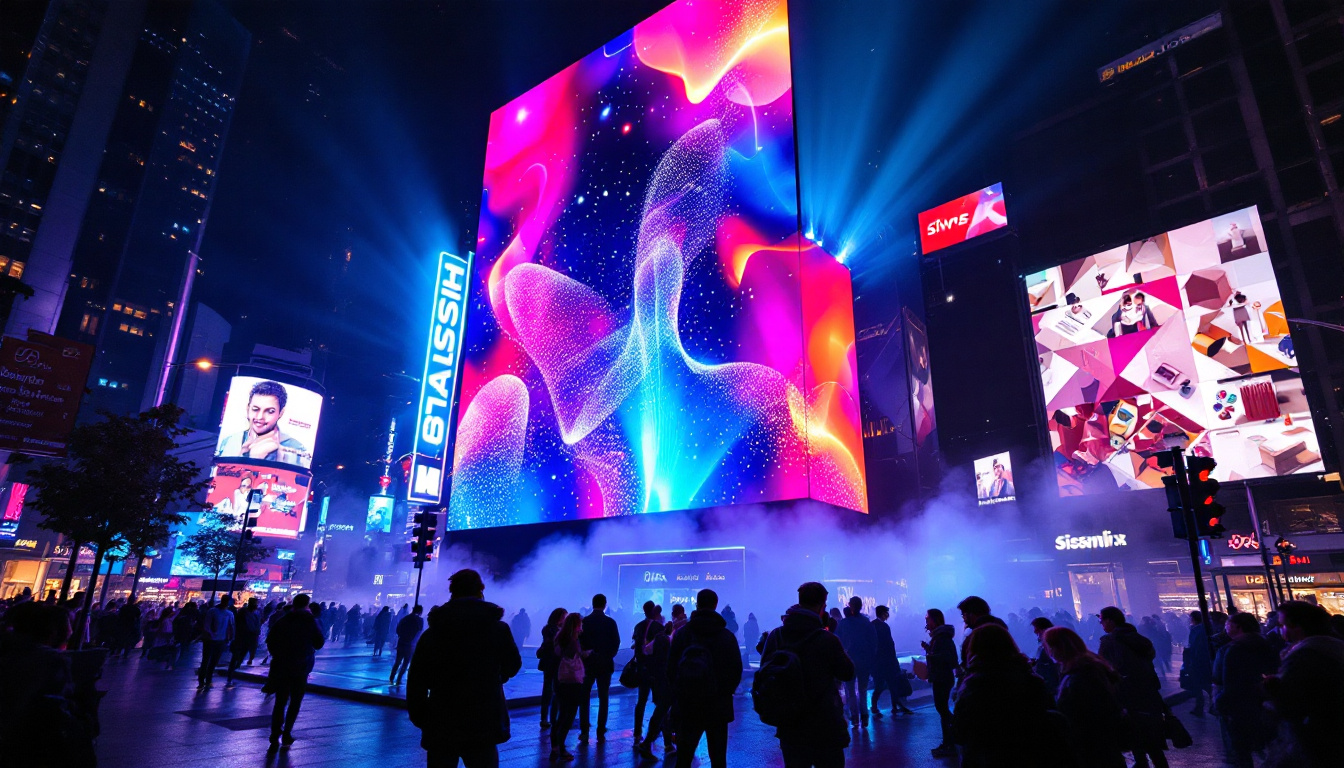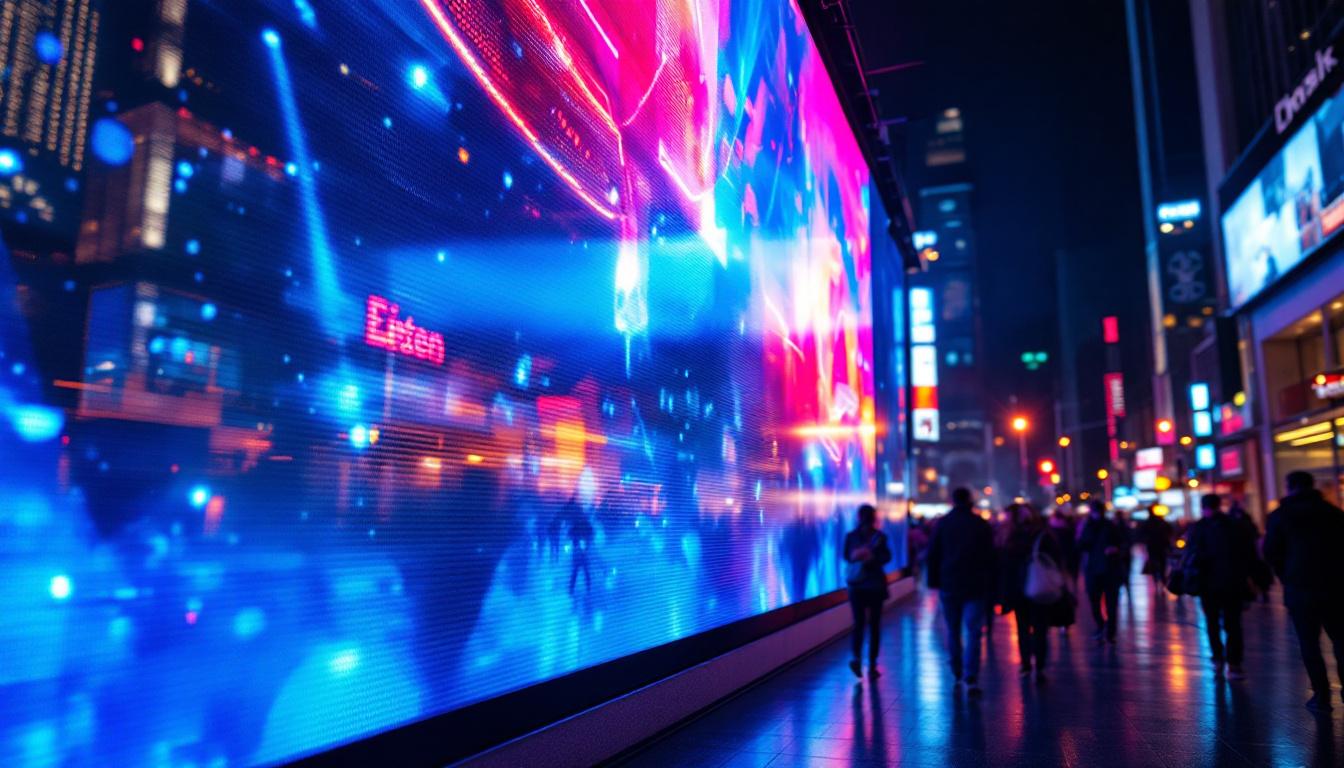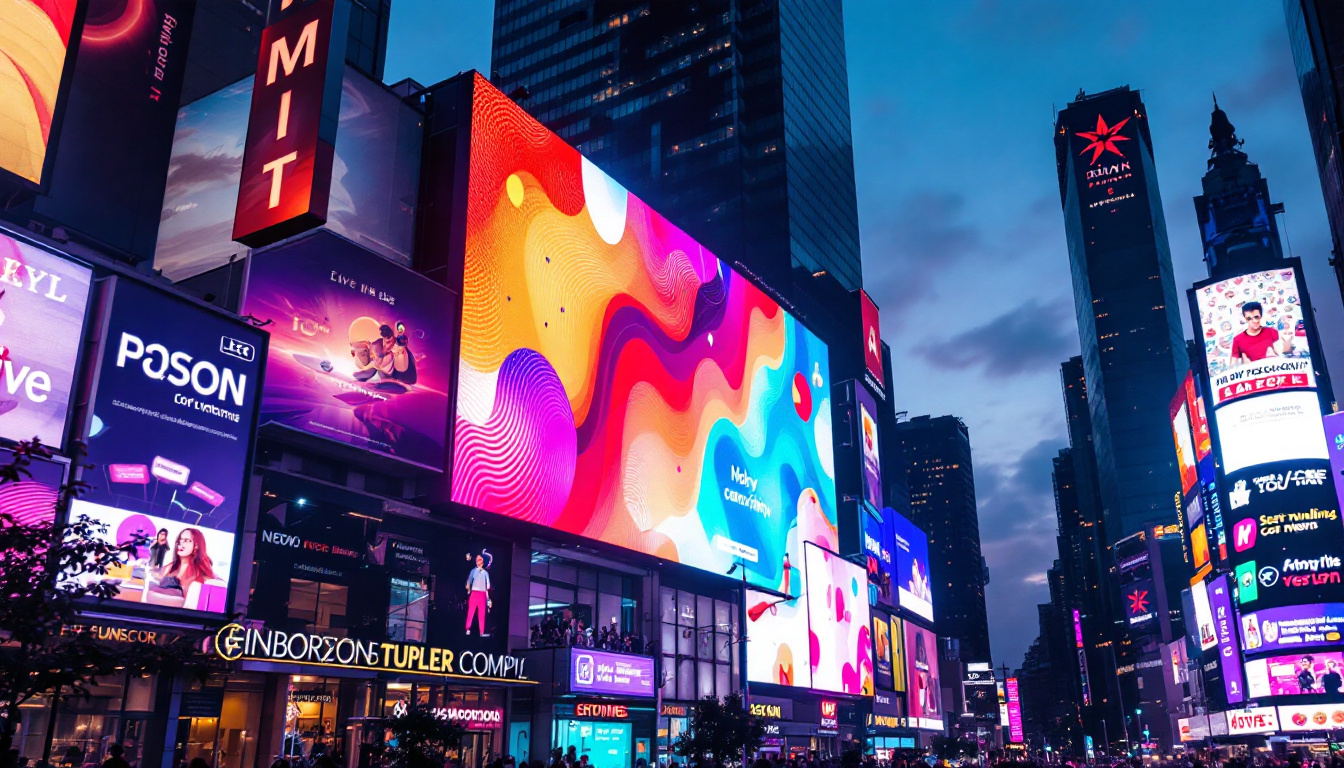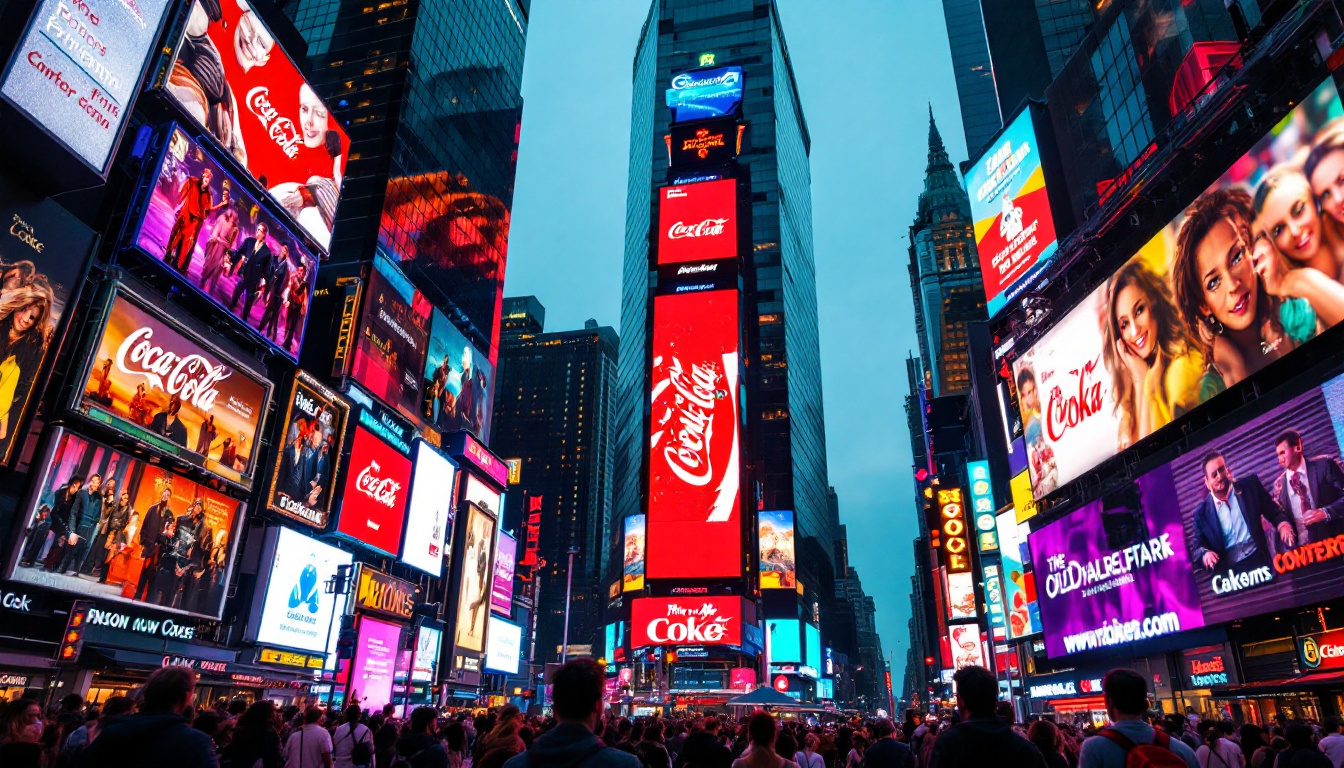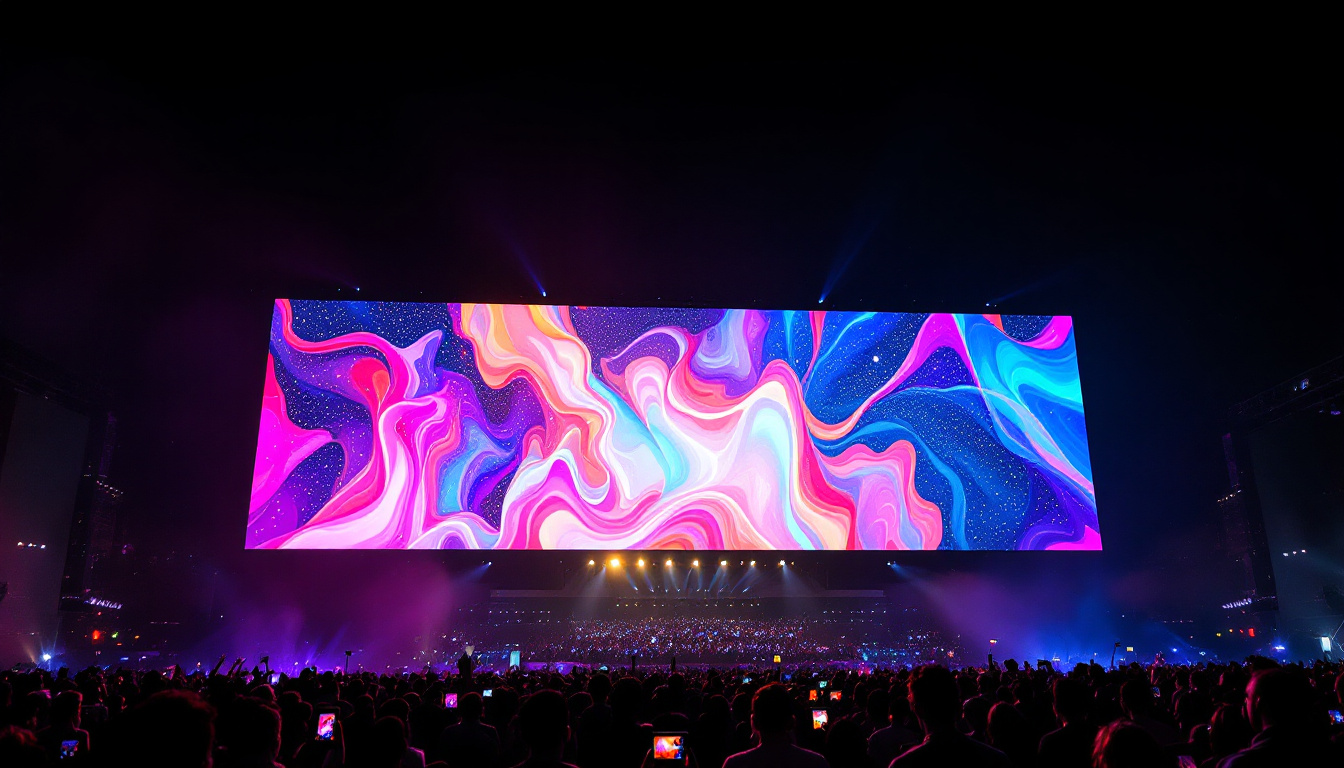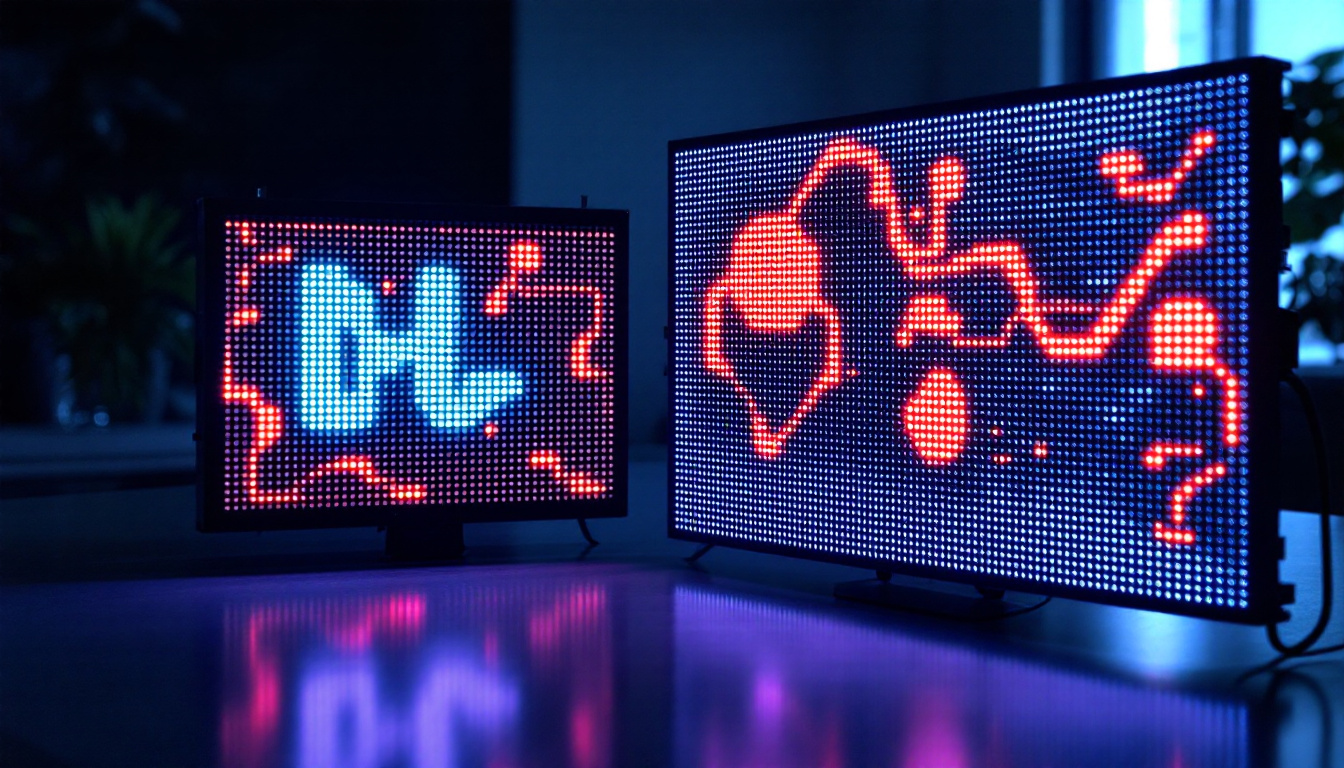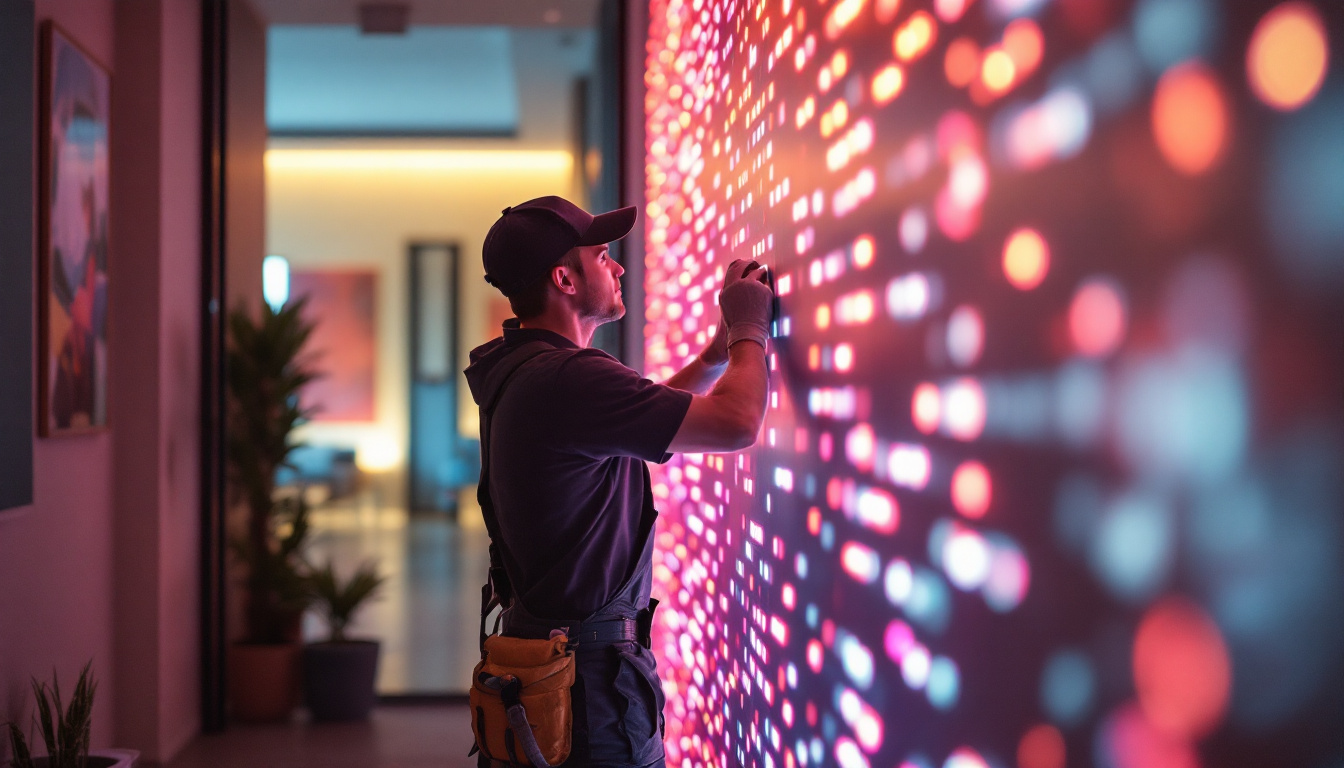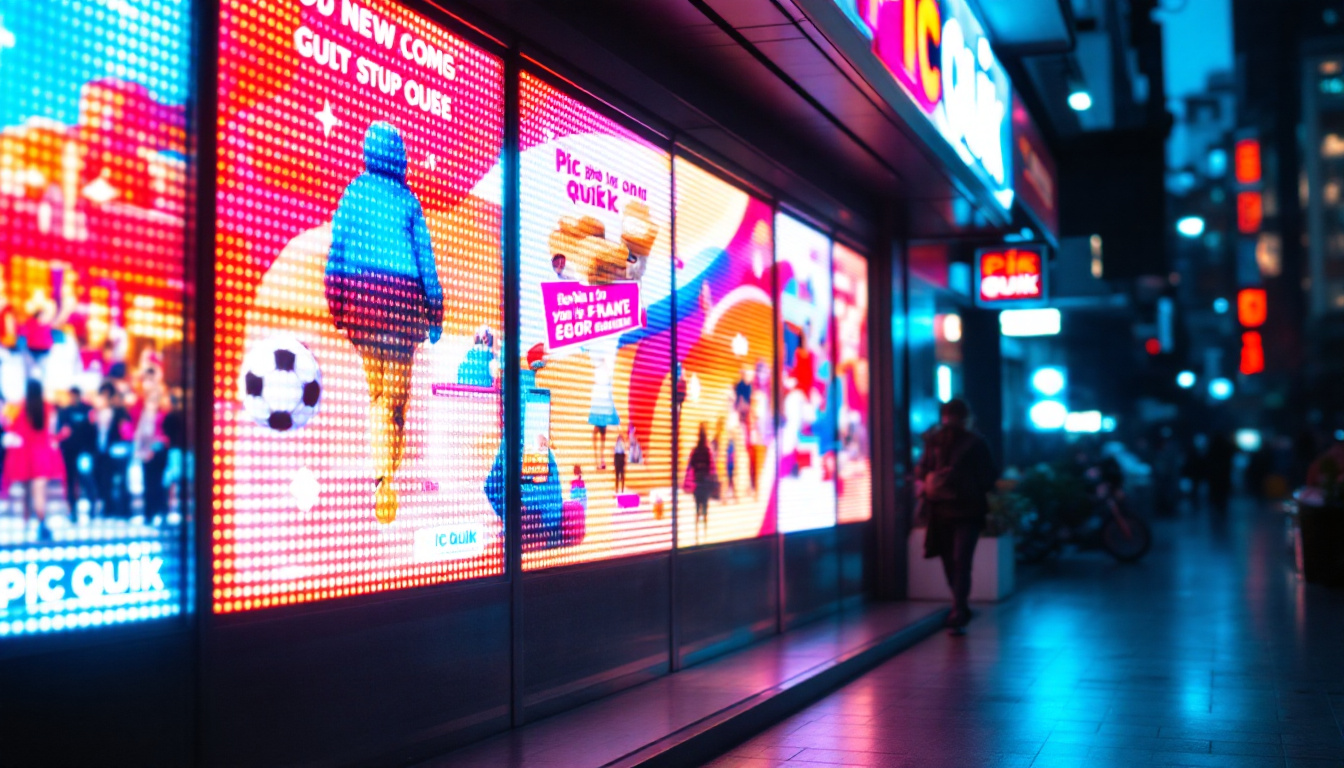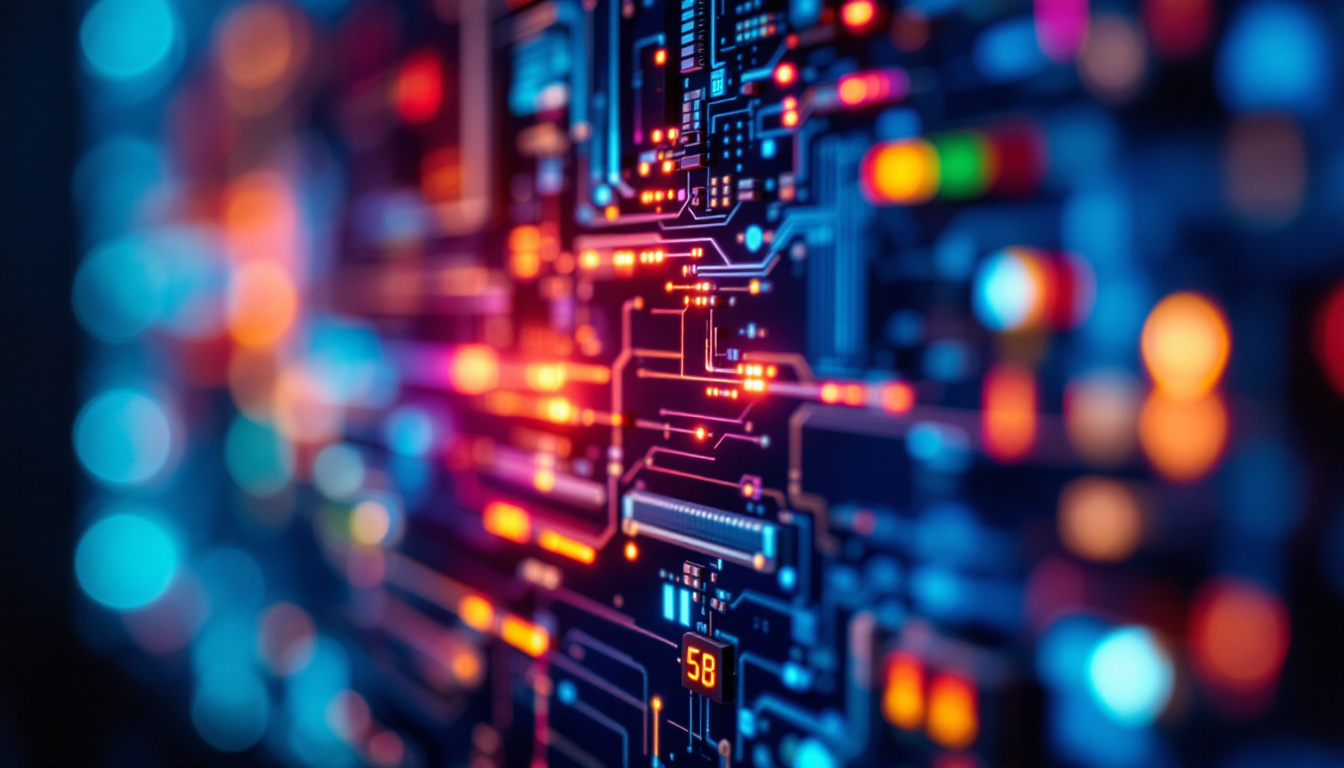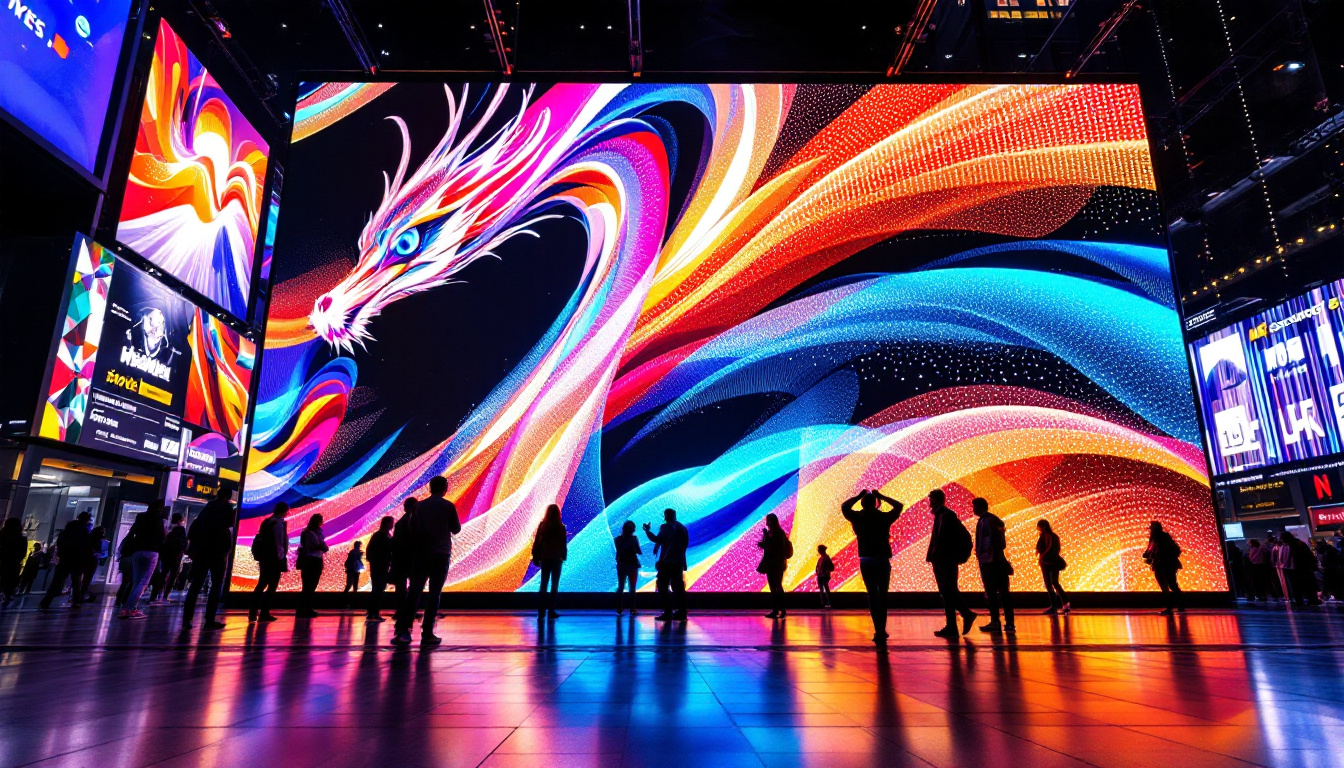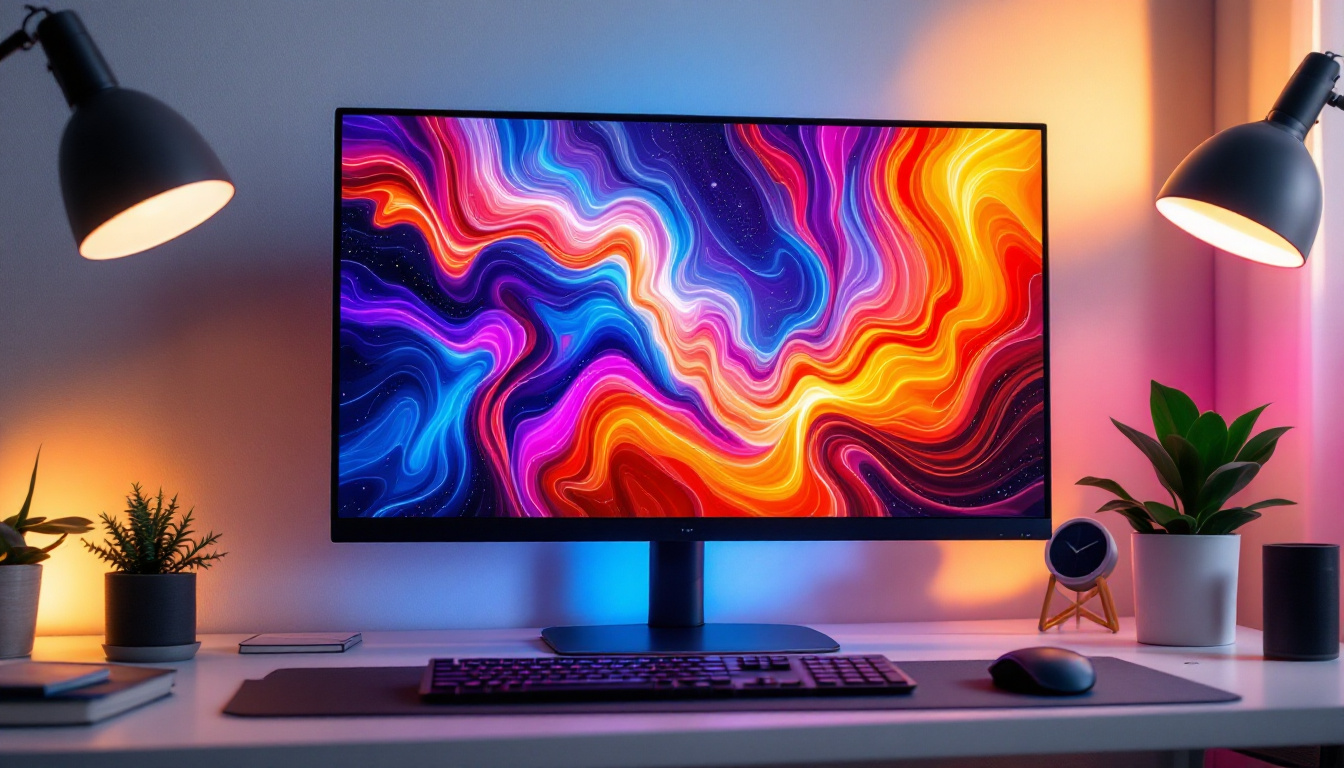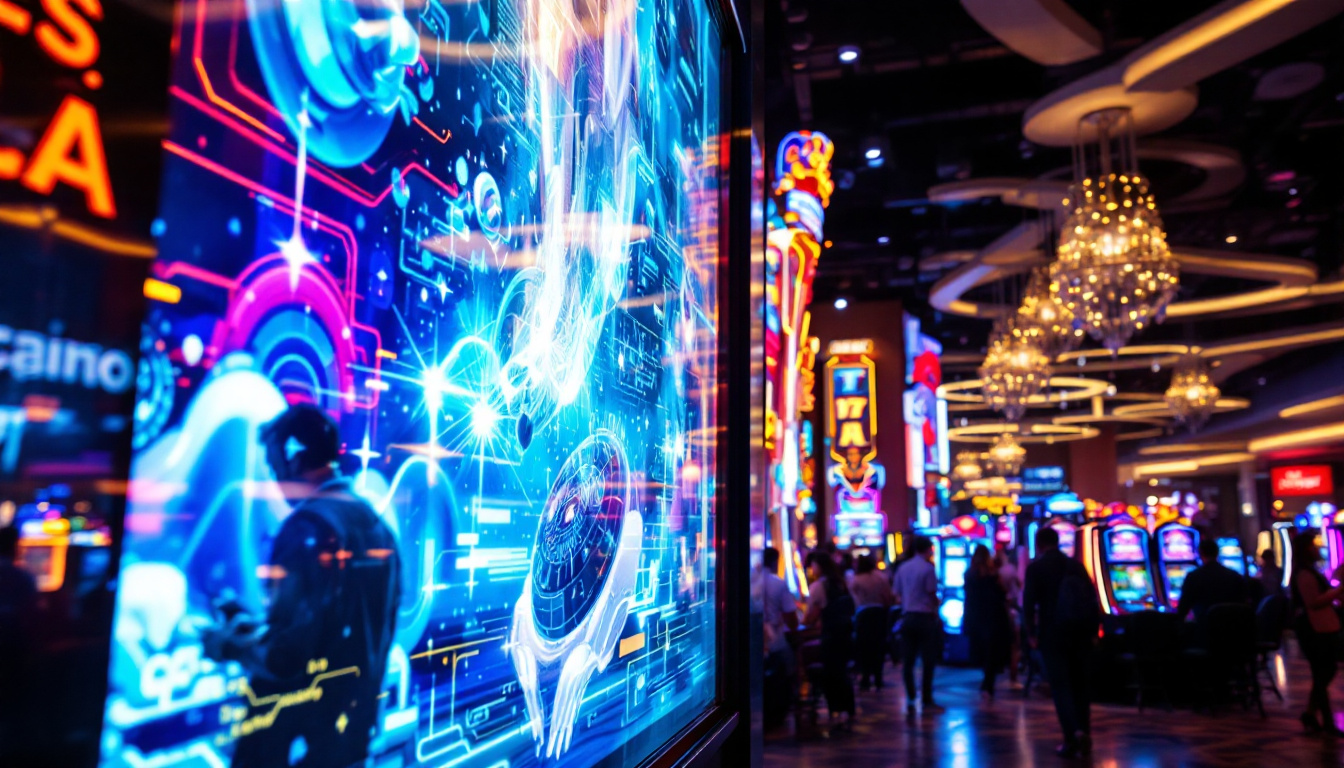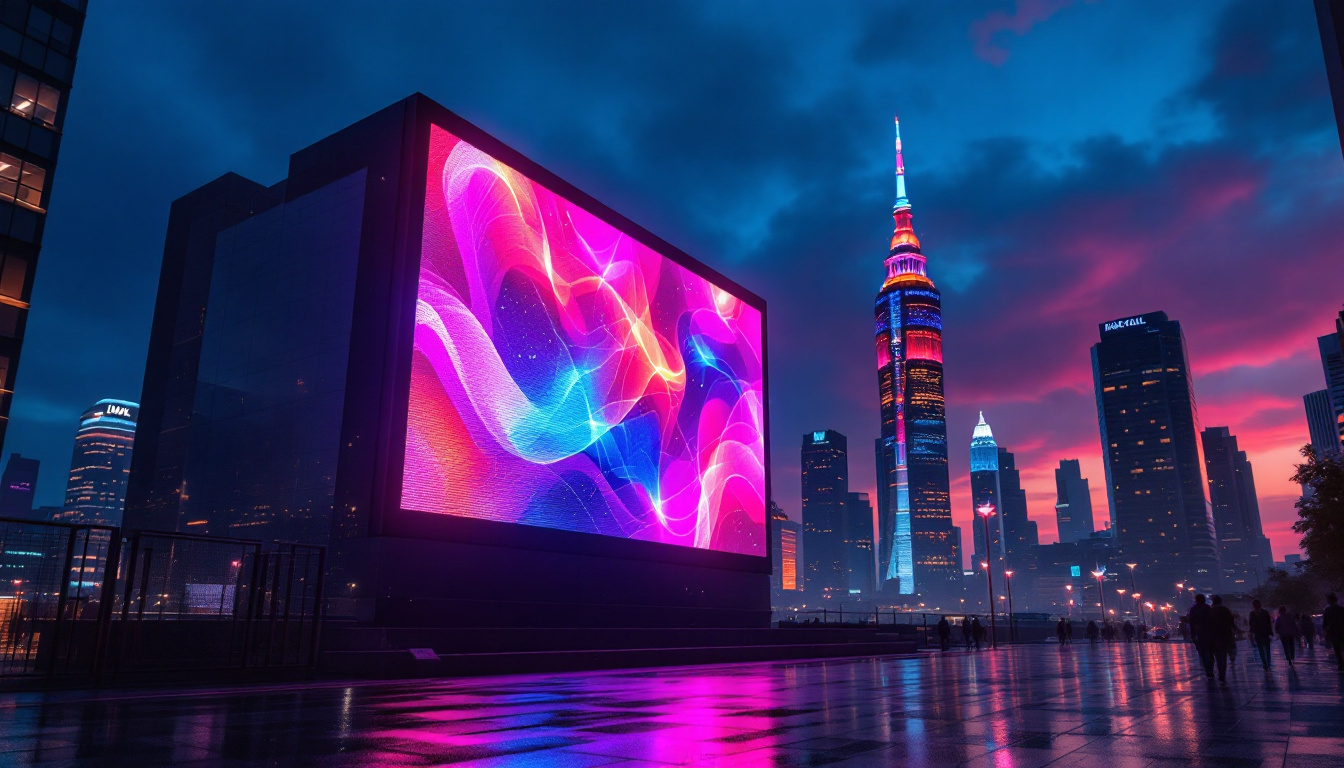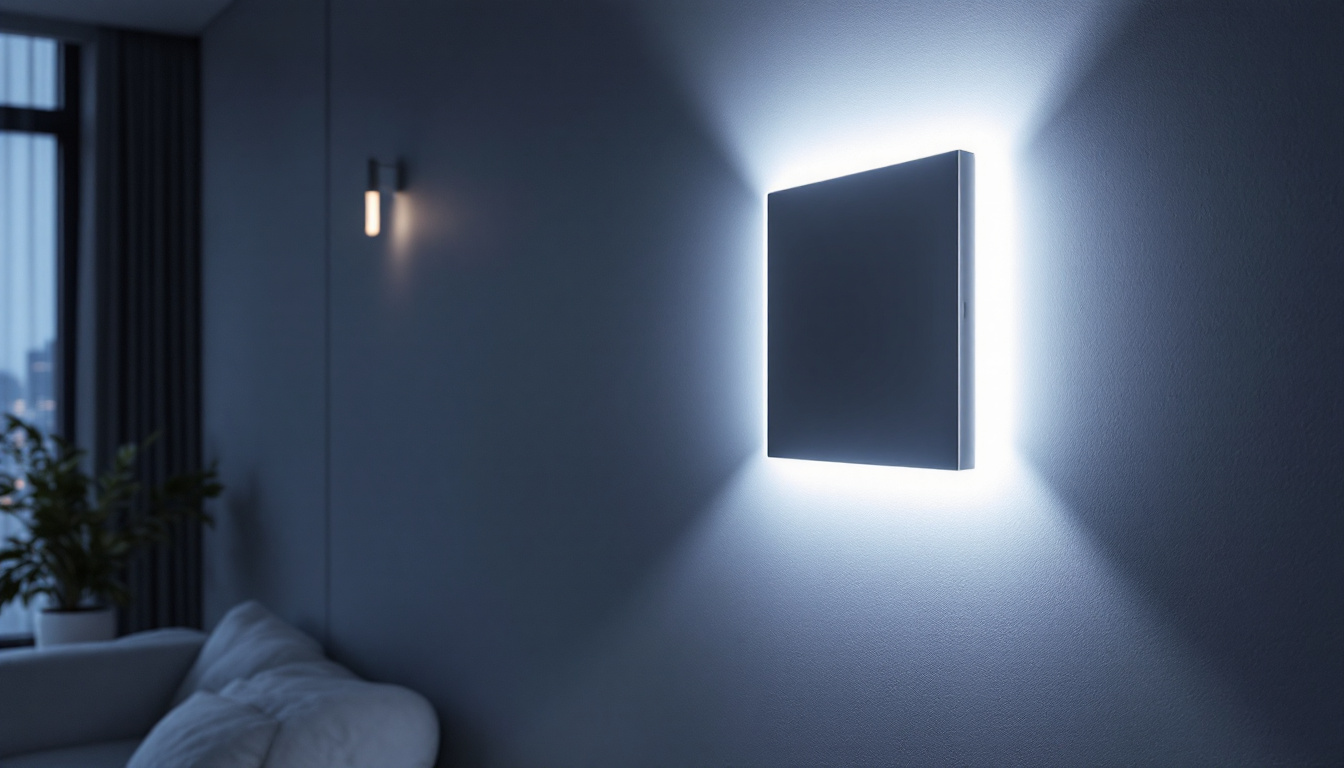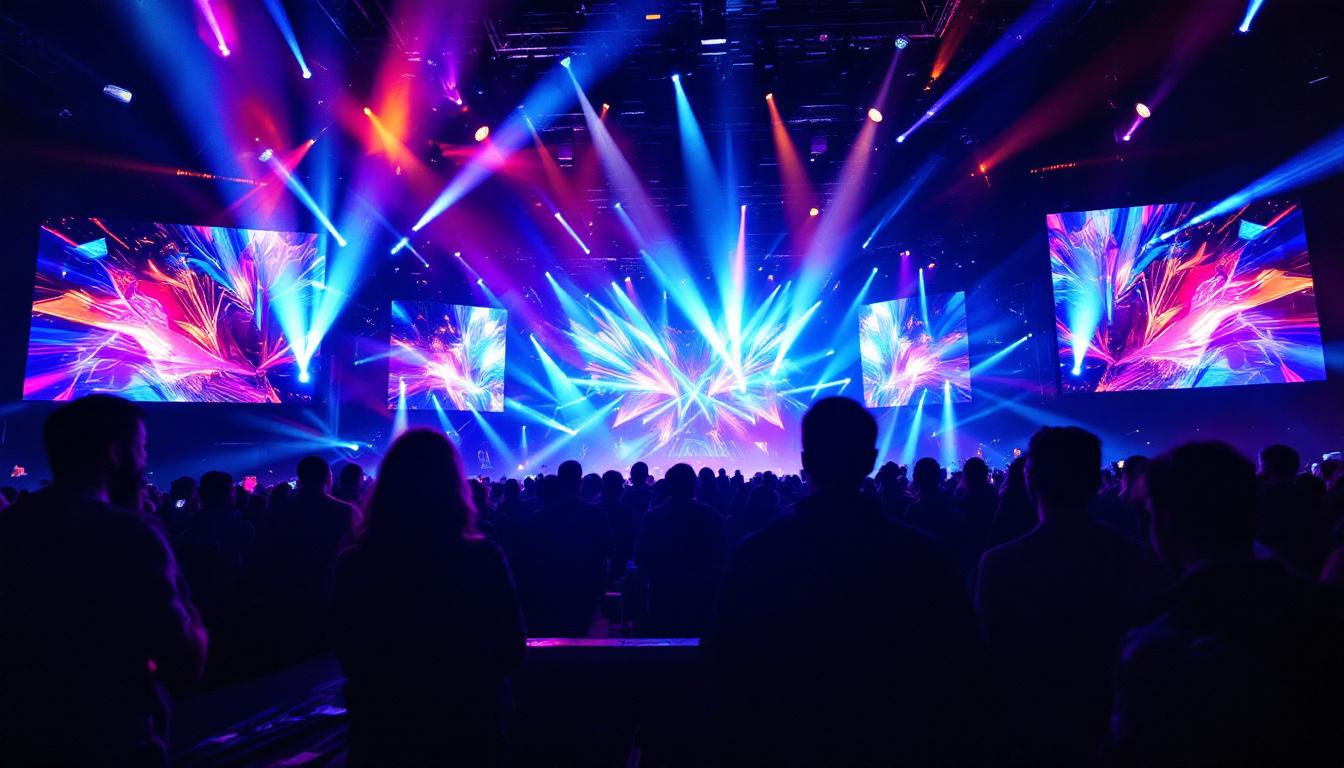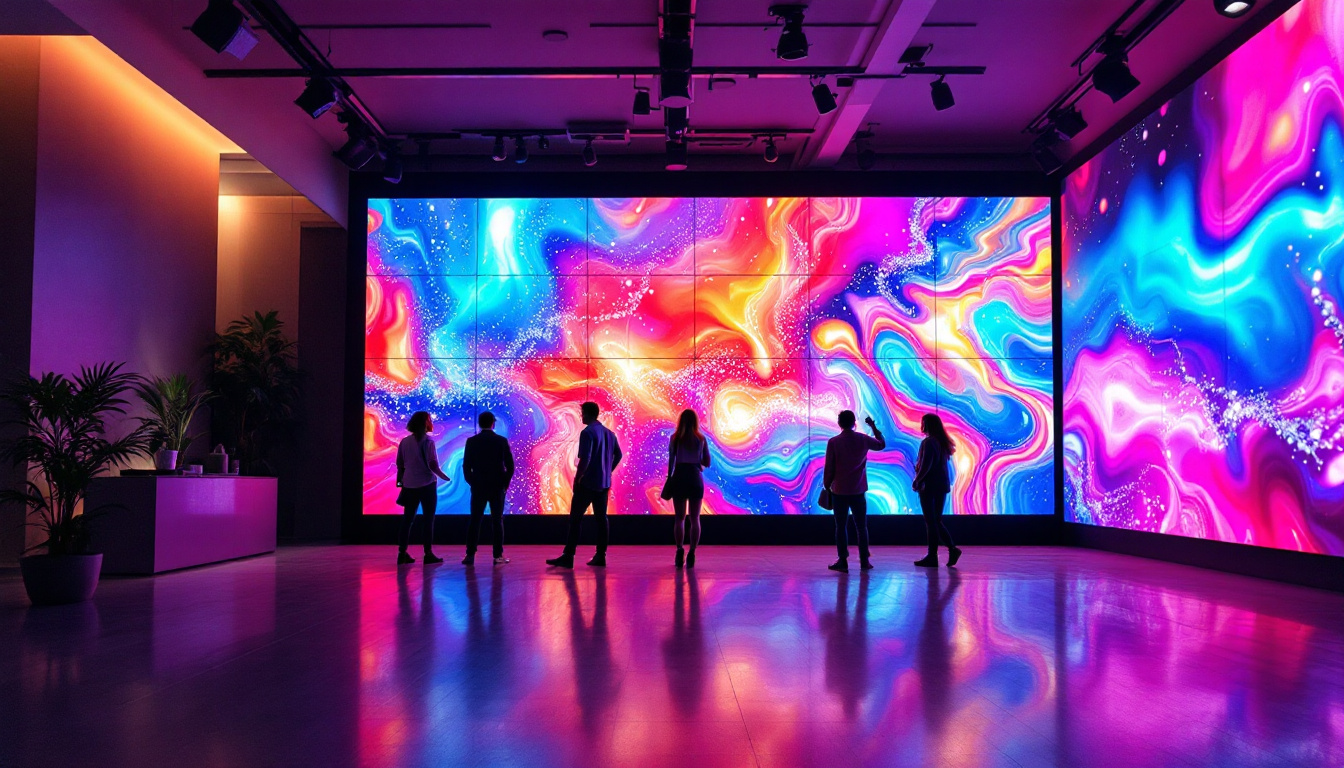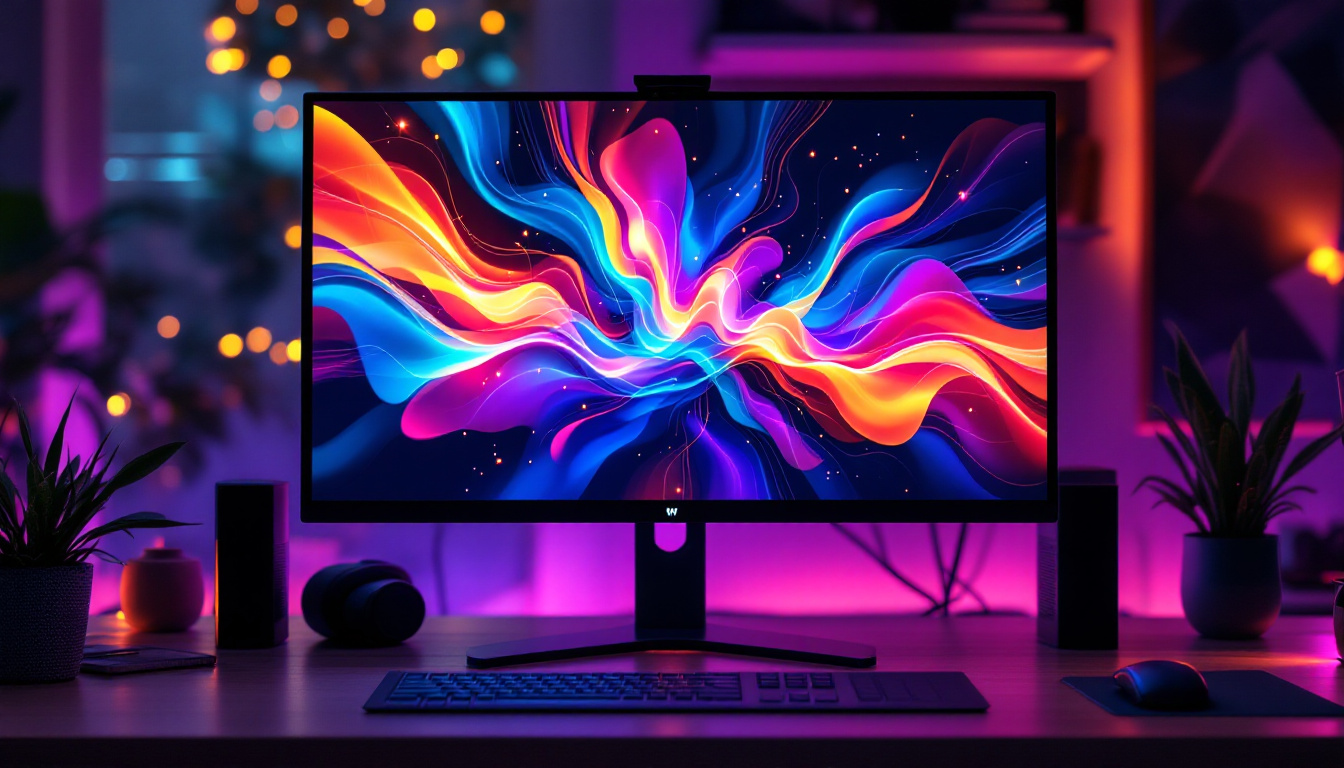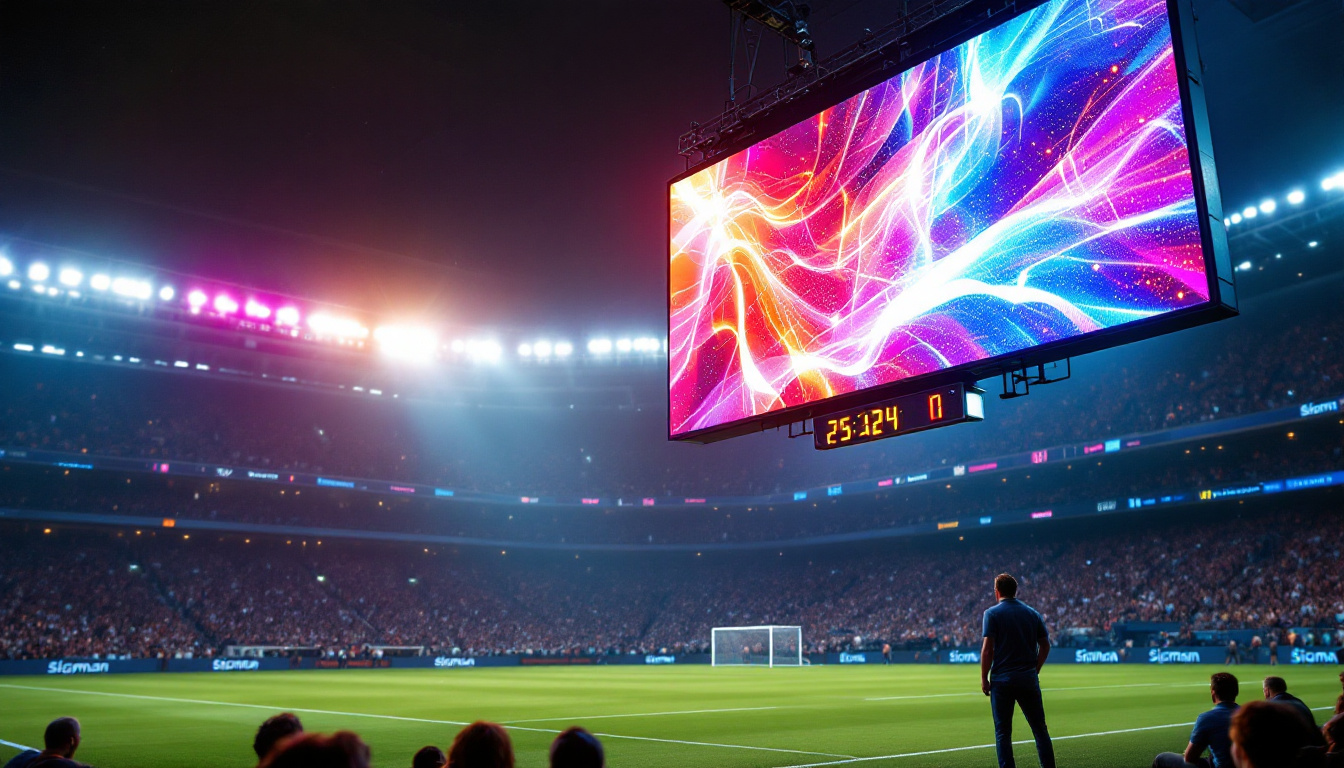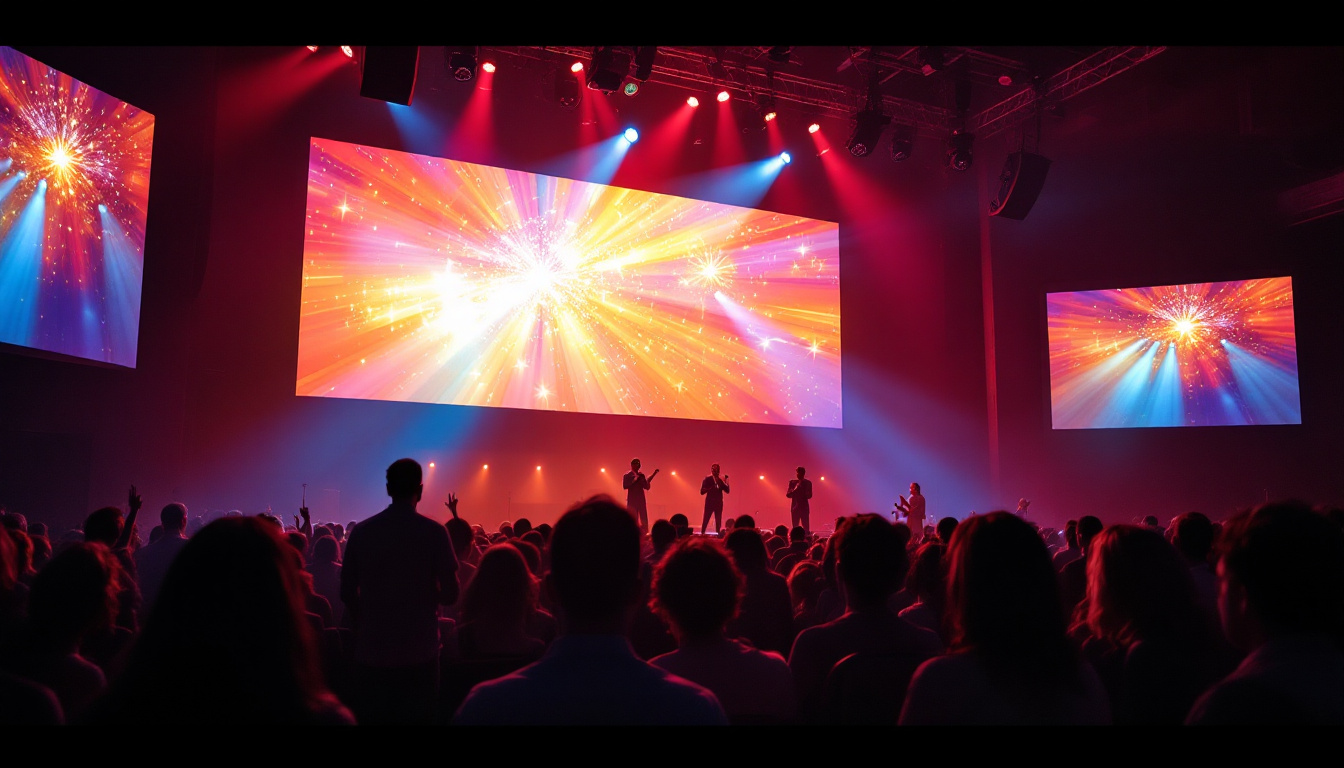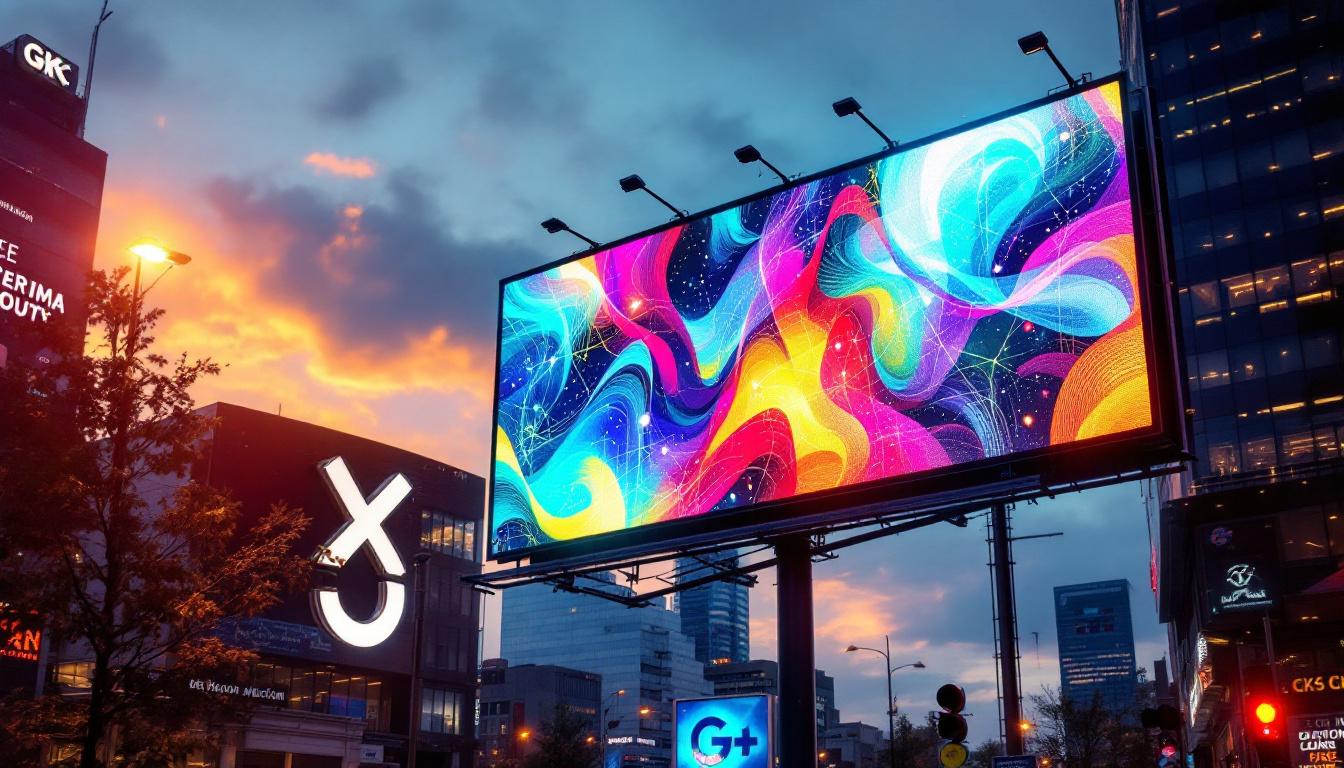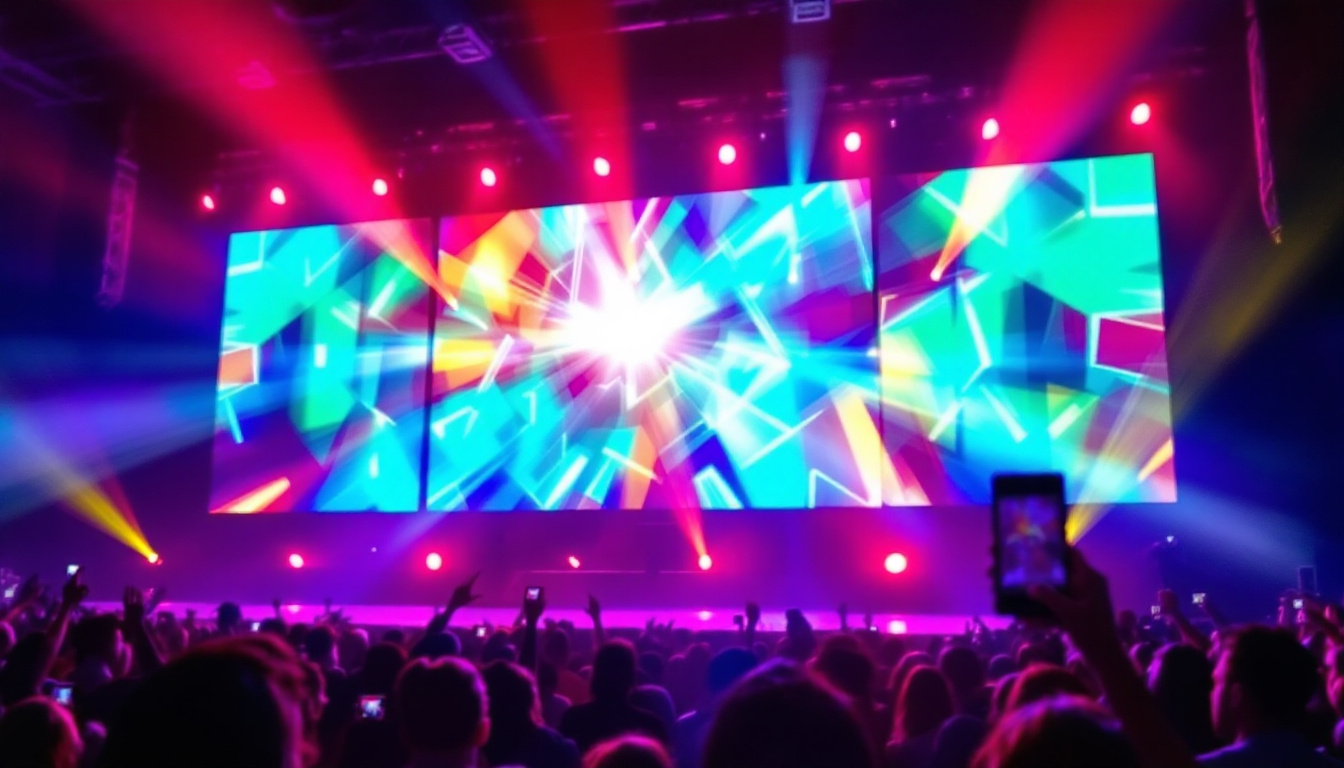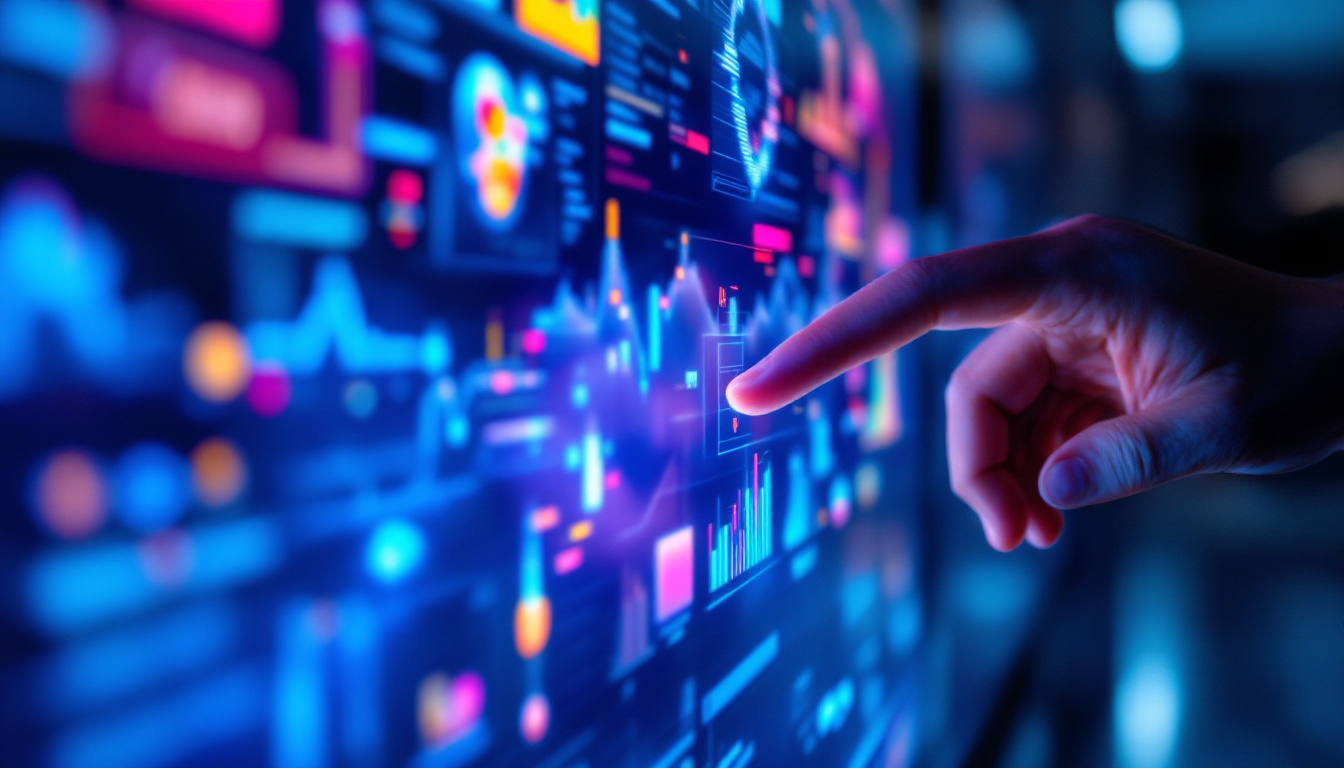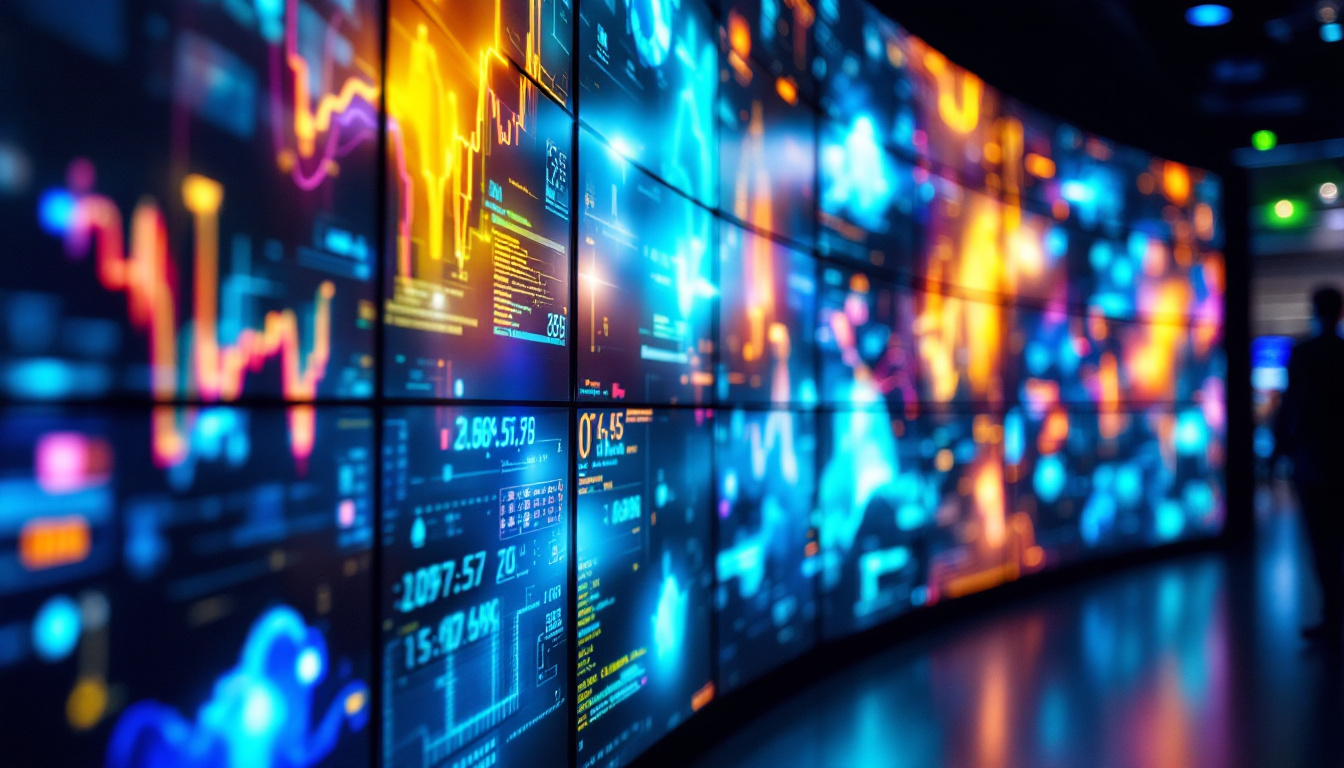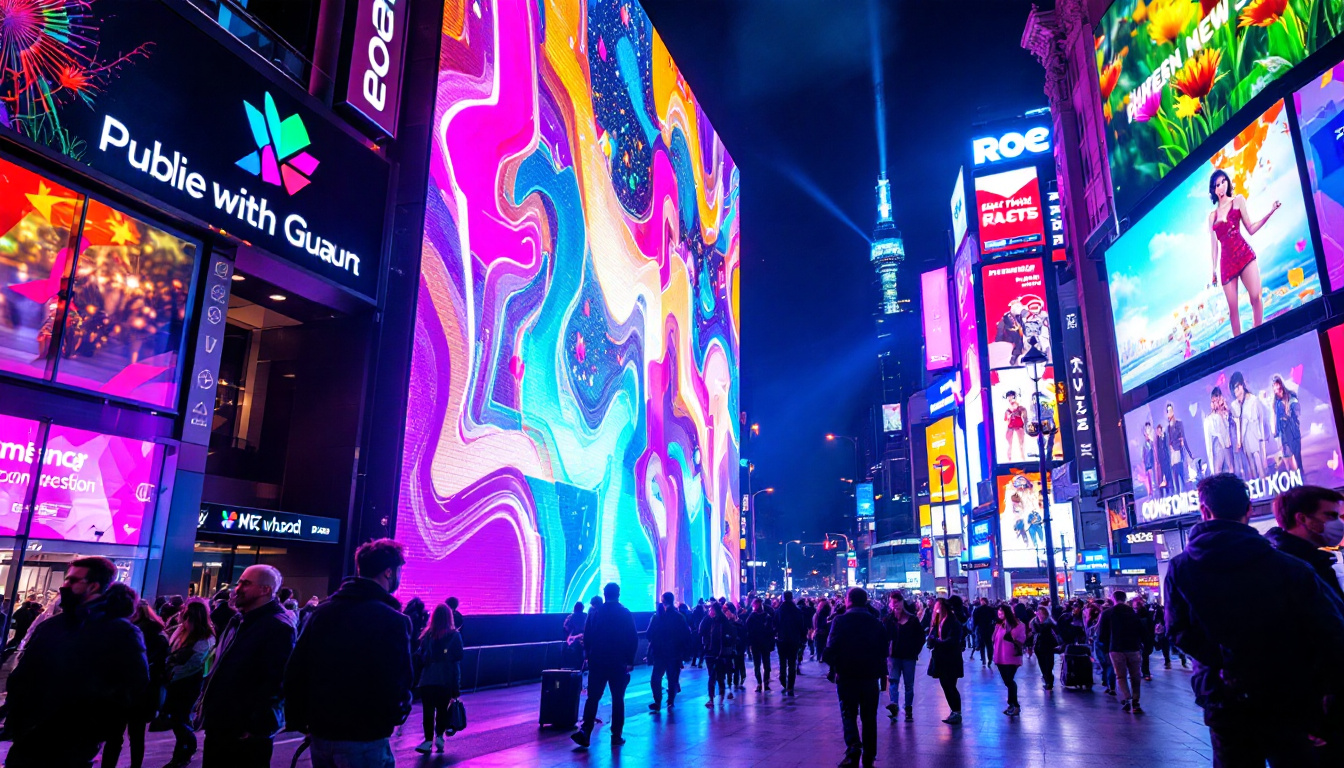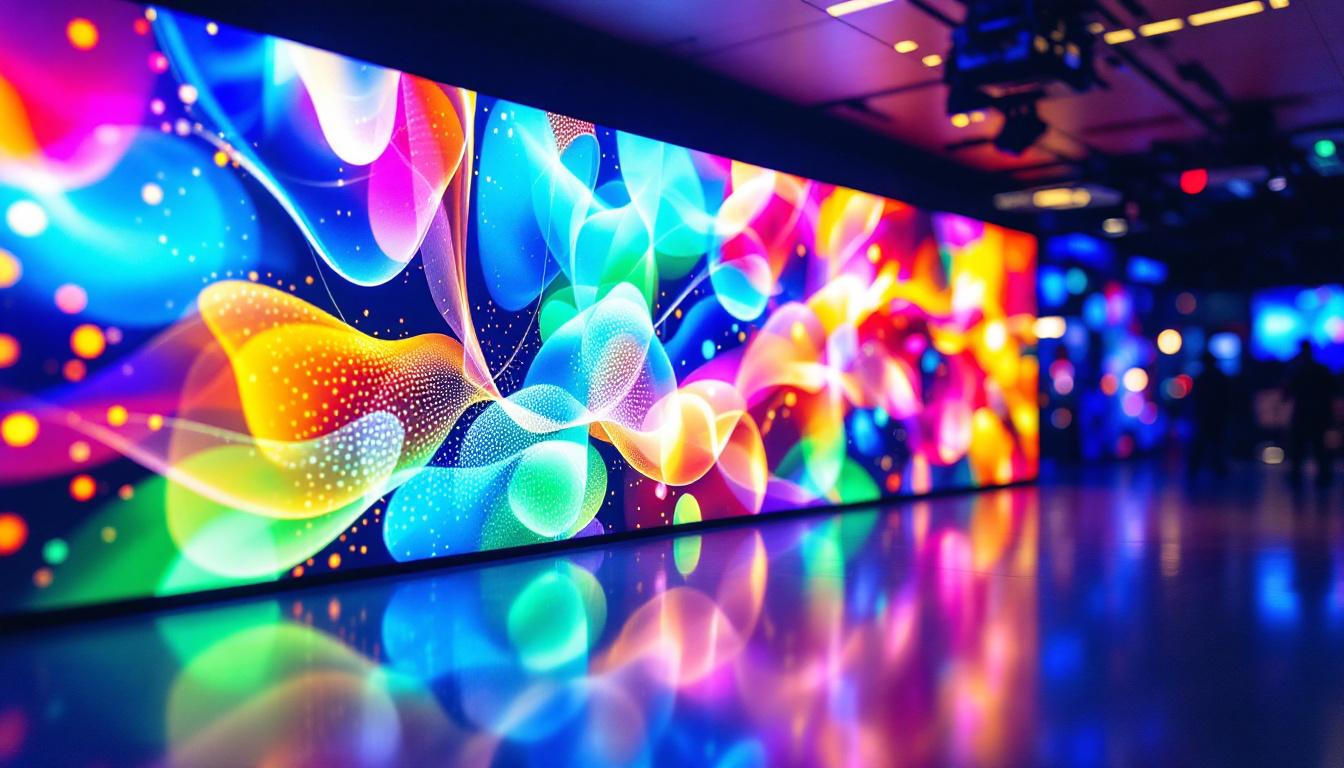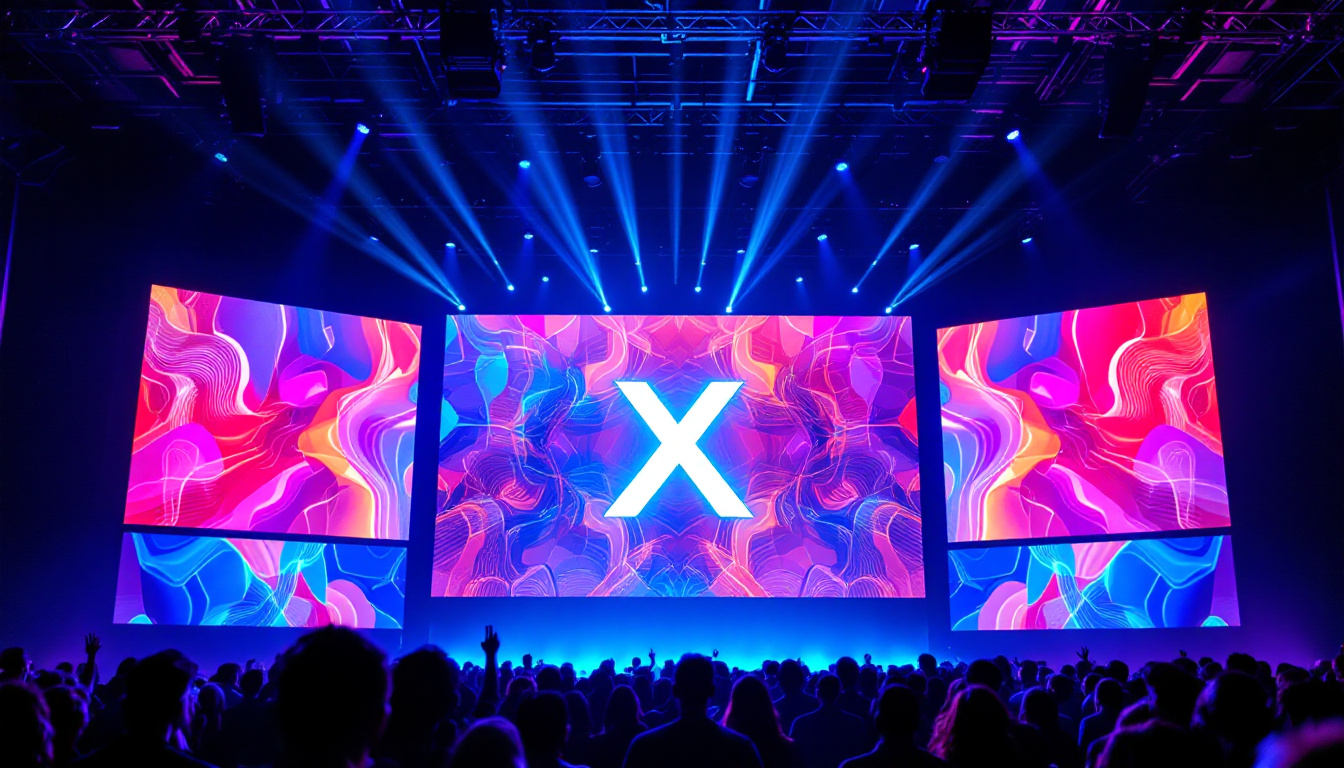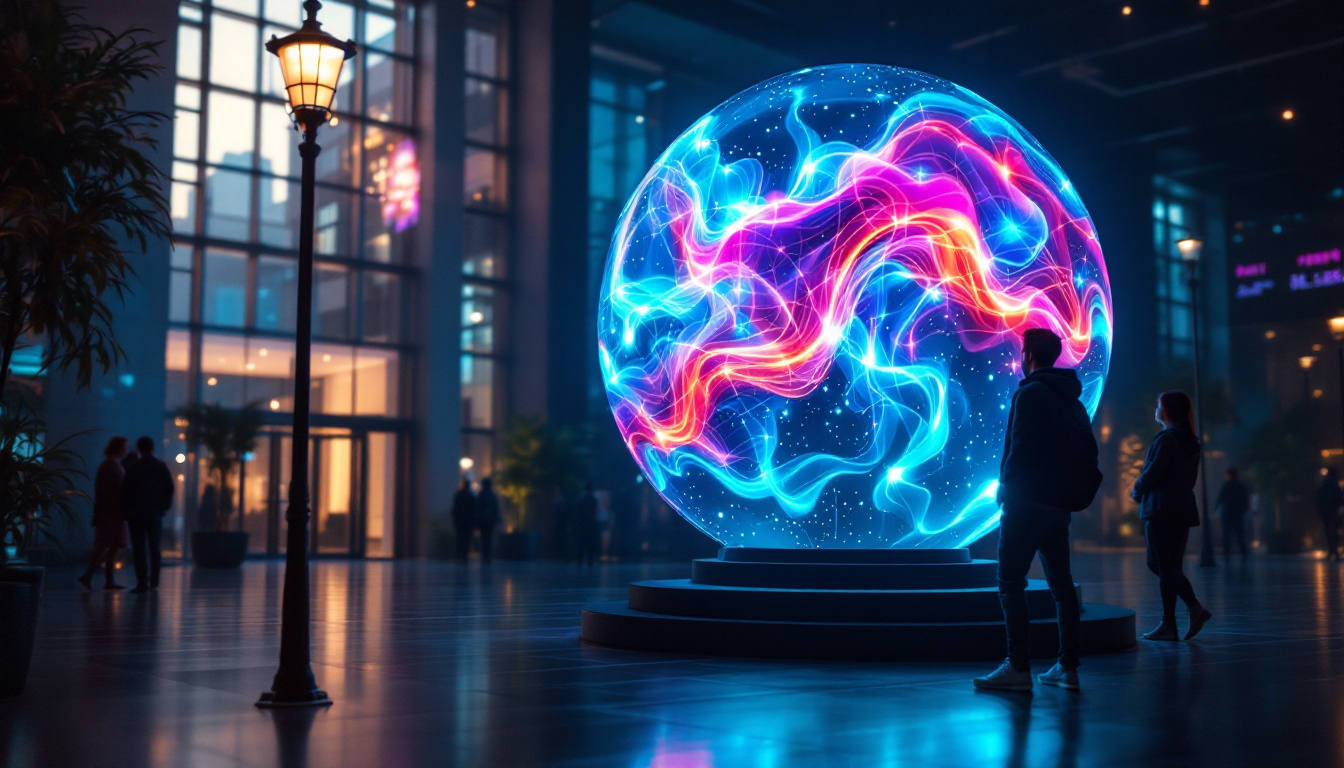In today’s fast-paced digital world, large screen displays have become an integral part of both commercial and personal environments. Among the various technologies available, LED (Light Emitting Diode) displays stand out due to their vibrant colors, energy efficiency, and versatility. This article delves into the intricate details of LED displays, exploring their functionalities, advantages, and applications.
Understanding LED Technology
LED technology is based on semiconductor devices that emit light when an electric current passes through them. Unlike traditional display technologies such as LCD (Liquid Crystal Display) or CRT (Cathode Ray Tube), LED displays utilize a matrix of small LEDs to create images and videos. This fundamental difference in how images are produced contributes to the unique characteristics of LED displays. The efficiency of LED technology allows for brighter displays with lower energy consumption, making them an environmentally friendly option compared to their predecessors.
Types of LED Displays
LED displays can be categorized into several types, each designed to meet specific needs and applications. The most common types include:
- Direct View LED (DVLED): These displays consist of individual LED modules that can be assembled into larger screens. They are commonly used for large-scale applications such as stadiums and outdoor billboards. Their modular nature allows for flexibility in size and shape, making them ideal for creative installations.
- LED-backlit LCD: This type uses LEDs to illuminate an LCD panel, enhancing brightness and color accuracy. It is widely used in televisions and computer monitors. The backlighting improves contrast ratios significantly compared to traditional fluorescent backlighting, providing a more vivid viewing experience.
- Organic LED (OLED): OLED displays use organic compounds that emit light, allowing for thinner screens and better contrast ratios. They are popular in high-end televisions and smartphones. The self-emissive nature of OLED technology means that each pixel can be turned on or off independently, resulting in true blacks and a wider color gamut.
How LED Displays Work
The operation of LED displays involves several key components, including the LED array, control systems, and power supply. The LED array is responsible for producing the light that forms the images. Each pixel in an LED display is made up of red, green, and blue (RGB) LEDs, which combine to create a full spectrum of colors. This RGB configuration allows for precise color mixing, enabling displays to reproduce images with remarkable fidelity.
The control system manages the signals sent to the LED array, determining which LEDs to illuminate and at what intensity. This system is crucial for achieving the desired image quality and responsiveness. Additionally, the power supply ensures that the display receives the necessary energy to operate efficiently. With advancements in technology, modern LED displays often incorporate smart features, such as adaptive brightness control and dynamic color calibration, which enhance the viewing experience by adjusting to ambient light conditions.
Furthermore, LED technology has made significant strides in terms of durability and lifespan. Many LED displays are designed to withstand harsh environmental conditions, making them suitable for both indoor and outdoor use. This resilience is particularly beneficial for advertising and public information displays, where exposure to the elements can be a concern. As a result, LED technology continues to evolve, paving the way for innovative applications in various fields, from entertainment to transportation and beyond.
Advantages of LED Displays
LED displays offer numerous advantages that make them a preferred choice for various applications. Understanding these benefits can help businesses and consumers make informed decisions when selecting display technology.
Energy Efficiency
One of the most significant advantages of LED displays is their energy efficiency. Compared to traditional display technologies, LEDs consume significantly less power, leading to reduced energy costs. This efficiency is particularly beneficial for large installations, where energy savings can translate into substantial financial benefits over time. Furthermore, the lower energy consumption contributes to a smaller carbon footprint, making LED displays an environmentally friendly option. As companies increasingly prioritize sustainability, the adoption of energy-efficient technologies like LEDs aligns with corporate responsibility goals and can enhance brand image.
Brightness and Visibility
LED displays are known for their exceptional brightness levels, making them highly visible even in well-lit environments. This characteristic is particularly advantageous for outdoor applications, where sunlight can wash out the visibility of other display types. The ability to maintain clarity and vibrancy in various lighting conditions enhances the overall viewing experience. Moreover, LED technology allows for a wide range of color reproduction, ensuring that images and videos appear more vivid and engaging. This feature is especially important for advertising and promotional displays, where capturing the attention of passersby is crucial for driving engagement and sales.
Longevity and Durability
LED technology is designed for longevity, with many displays boasting lifespans of over 100,000 hours. This durability reduces the need for frequent replacements, making LED displays a cost-effective solution in the long run. Additionally, their robust construction makes them resistant to shock and vibration, further extending their usability in demanding environments. Beyond physical durability, LED displays are also less susceptible to burn-in issues that can plague other technologies, such as plasma or LCD. This resilience ensures that the quality of the display remains consistent over time, providing a reliable solution for businesses that depend on their visual communication tools.
Versatility in Applications
Another notable advantage of LED displays is their versatility in applications. They can be used in a wide range of settings, from retail environments and corporate offices to concert venues and sports arenas. The modular design of many LED systems allows for creative configurations, enabling businesses to customize their displays to fit unique spaces and requirements. This adaptability not only enhances aesthetic appeal but also maximizes the impact of the displayed content. Furthermore, advancements in technology have led to the development of flexible LED screens that can be curved or shaped to fit unconventional spaces, opening up new possibilities for innovative advertising and artistic installations.
Low Maintenance Requirements
LED displays also boast low maintenance requirements, which is a significant advantage for businesses looking to minimize operational disruptions. Unlike traditional display technologies that may require frequent servicing or calibration, LED displays typically need only periodic cleaning and occasional software updates. This ease of maintenance allows businesses to focus on their core operations rather than worrying about display performance. Additionally, many LED systems come equipped with smart technology that can monitor performance and alert users to potential issues before they become significant problems, further enhancing reliability and reducing downtime.
Applications of LED Displays
The versatility of LED displays allows them to be utilized in a wide range of applications across different industries. From advertising to entertainment, the possibilities are virtually limitless.
Advertising and Marketing
In the realm of advertising, LED displays have revolutionized how brands communicate with consumers. digital billboards and signage can display dynamic content that captures attention and engages viewers. Advertisers can easily update their messages in real-time, allowing for targeted campaigns that resonate with specific audiences.
Entertainment Venues
LED displays have become a staple in entertainment venues, including concert halls, theaters, and sports arenas. Large screens enhance the audience’s experience by providing clear visuals and vibrant colors. Additionally, LED technology allows for creative displays, such as video walls and immersive environments that captivate audiences.
Corporate and Educational Settings
In corporate environments, LED displays are often used for presentations, video conferencing, and information sharing. Their clarity and brightness ensure that content is easily visible to all participants. Similarly, educational institutions utilize LED displays for lectures and presentations, facilitating better learning experiences for students.
Challenges and Considerations
While LED displays offer numerous benefits, there are also challenges and considerations to keep in mind. Understanding these factors can help users maximize the advantages of LED technology while mitigating potential drawbacks.
Initial Cost
One of the primary challenges associated with LED displays is their initial cost. Although prices have decreased over the years, high-quality LED displays can still represent a significant investment. Businesses and consumers must weigh the upfront costs against the long-term savings in energy and maintenance to determine the overall value.
Heat Generation
LED displays, particularly larger ones, can generate heat during operation. While most modern displays are designed with cooling systems to manage this heat, it is essential to consider ventilation and placement to prevent overheating. Proper installation and maintenance are crucial to ensure optimal performance and longevity.
Future Trends in LED Display Technology
The LED display industry is continually evolving, with advancements in technology paving the way for new possibilities. Staying informed about these trends can help users anticipate future developments and make strategic decisions.
Mini and Micro LED Technology
Mini and micro LED technologies are emerging as the next frontier in display innovation. These technologies utilize smaller LEDs, allowing for higher pixel densities and improved image quality. As manufacturers continue to refine these technologies, they promise to deliver even more vibrant colors and finer details in displays.
Integration with Smart Technologies
As smart technology becomes increasingly prevalent, LED displays are being integrated with smart systems for enhanced functionality. This integration allows for features such as remote management, real-time content updates, and interactive capabilities. Businesses can leverage these features to create dynamic and engaging experiences for their audiences.
Environmental Sustainability
With growing concerns about environmental sustainability, the LED display industry is also focusing on eco-friendly practices. Manufacturers are exploring ways to reduce waste, improve recyclability, and utilize sustainable materials in their products. This shift not only benefits the environment but also appeals to consumers who prioritize sustainability in their purchasing decisions.
Conclusion
LED displays have transformed the way we interact with visual content, offering unparalleled brightness, energy efficiency, and versatility. From advertising to entertainment, their applications are vast and varied, making them an essential component of modern communication strategies. While challenges such as initial costs and heat generation exist, the benefits often outweigh these concerns, particularly when considering long-term savings and performance.
As technology continues to evolve, the future of LED displays looks promising, with innovations such as mini and micro LEDs, smart integrations, and sustainable practices on the horizon. Understanding the intricacies of LED displays can empower businesses and consumers to make informed decisions, ensuring they harness the full potential of this dynamic technology.
Discover LumenMatrix’s Innovative LED Display Solutions
Ready to elevate your visual experience with the latest in LED display technology? LumenMatrix is at the forefront of innovation, offering a diverse range of LED display solutions tailored to meet your needs. From captivating Indoor and Outdoor LED Wall Displays to dynamic Vehicle and Sports LED Displays, our products are designed to enhance engagement and ensure your message resonates with clarity and impact. Explore our cutting-edge solutions, including the versatile All-in-One LED Display and the visually stunning LED Transparent Display. Check out LumenMatrix LED Display Solutions today and transform your visual communication strategy.

